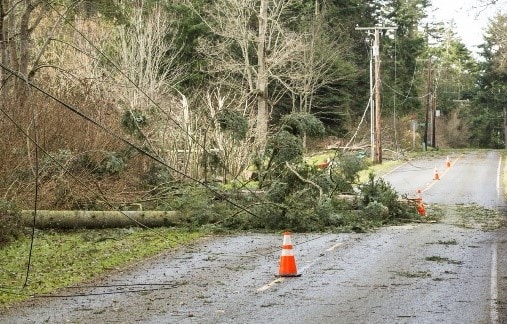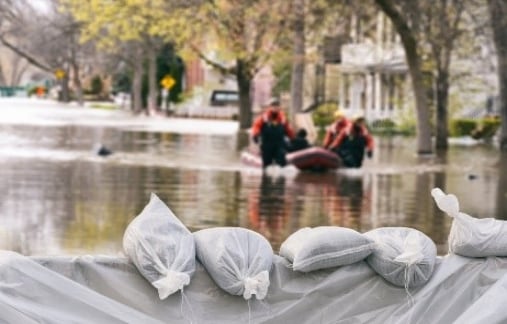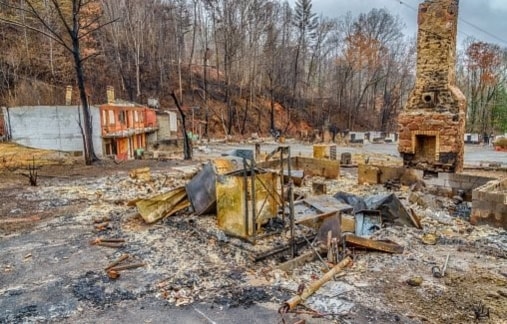Guidance on Health and Safety Issues Among Clean-Up Workers Involved with Handling and Burning Hurricane Debris



The National Institute for Occupational Safety and Health (NIOSH) provides the following guidelines for preventing injury and illness among clean-up workers in the response to hurricanes. The large amounts of debris caused by hurricanes can lead to an extended clean-up involving many methods of debris disposal including burning. These recommendations will be reviewed on a regular basis and updated as needed.
From environmental and public health perspectives, burning debris can cause adverse health effects and raises safety concerns. Therefore, burning of debris may be banned in certain areas by federal, state or local fire officials. However, in some disaster situations with large amounts of debris, burning may be allowed. If this method of debris removal is allowed, it must be done in accordance with all local, state, and federal regulations and emergency orders, and it must be done under the supervision of trained officials or their designees.
Smoke Inhalation
Smoke is made up of carbon dioxide, water vapor, carbon monoxide, fine particulate matter, hydrocarbons and other organics, and a variety of other substances. Many types of toxic substances may be present in smoke and may increase with the burning of specific hazardous materials such as lead paint, weatherized (treated) lumber that may contain arsenic or chromate, insulation (including asbestos and fibrous materials), particle board, asphalt (roofing materials), household trash, used tires, rubber, plastics, vinyl materials, and foam padding (mattresses, furniture).
The health effects of smoke inhalation can range from irritation of the eyes and respiratory tract to more serious disorders including acute and chronic lung disorders. The potential for health problems related to exposure to toxic substances in smoke will depend on the type of material being burned, concentrations of substances in the smoke, the duration of exposure, preexisting medical conditions, amount and size of the particulate in the smoke, and individual susceptibility. The elderly, people with preexisting illnesses such as heart or lung conditions, smokers, and children may be more sensitive to the effects of smoke inhalation. Information concerning smoke from large fires, including more information on sensitive populations, is available at: https://www.airnow.gov/sites/default/files/2021-05/wildfire-smoke-guide-revised-2019.pdf, and https://www.cdc.gov/disasters/wildfires/smoke.html.
Heat Stress
Heat-induced occupational illnesses and injuries can occur with excessive exposure to a hot work environment including burning debris. Factors leading to heat stress include high temperature and humidity, direct heat, extreme exertion, inadequate fluid intake, inadequate conditioning, and inadequate tolerance to hot workspaces. Heat stress occurs when the body is unable to cool itself by sweating. Heat stress may be accompanied by transient heat fatigue, heat rash, fainting, heat cramps, heat exhaustion, and heat stroke. Information on the occurrence and prevention of heat stress is available at http://www.osha.gov/Publications/osha3154.pdf and https://www.cdc.gov/niosh/topics/heatstress/.
Fire-related Injuries
Severe burns can also occur as a direct result of incidental contact with hot surfaces and flames. Many organizations have guidelines available concerning issues related to fire safety. (EPA Planning for Natural Disaster Debris)
Equipment
Heavy equipment used to move debris, such as trucks, front end loaders, etc., may represent an additional physical hazard on site. Additional equipment related hazards may include those associated with the operation of air curtain burners or incinerators.
- Plan the burn to minimize impact.
- Coordinate the burn with local officials, such as the local fire department or other designated authorities.
- Provide public warning that notes when and where the burn will occur, and warn individuals with respiratory problems to avoid exposure.
- Provide constant on-site supervision of the fire during the burn.
- Check local weather forecasts to select optimal burn conditions. The National Oceanic and Atmospheric Administration’s National Weather Service Web site at https://www.weather.gov/provides accurate, up-to-date weather forecasts.
- Avoid respiratory and dermal exposure to the smoke from the fire.
- Stay upwind from the smoke.
- Spend time indoors (some buildings may provide insufficient protection due to ventilation, and infiltration rates).
- Heat stress is a significant potential hazard that must be controlled.
- Establish a regimen of work and rest for workers.
- Consider the use of coolant vests.
- Provide shower facilities.
- Use respiratory protection, as appropriate.
- Consult with persons experienced with occupational respiratory protection and familiar with the variety of substances that may be present in the smoke to determine the appropriate level of respiratory protection. Particulate-filtering respirators can effectively remove dust from inhaled air but not gases or vapors; thus, particulate-filtering respirators are not effective for protection against all the products of fire.
- Firefighters and other trained emergency responders should use a self-contained breathing apparatus (SCBA) when concentrations of hazardous substances are immediately dangerous to life or health (IDLH), or when an oxygen-deficient environment exists (less than 19.5% oxygen).
- Information concerning different types of respiratory protection and appropriate uses is available from the NIOSH Web site at https://www.cdc.gov/niosh/topics/respirators/ and from the Occupational Safety and Health Administration (OSHA) Web site at http://www.osha.gov/SLTC/etools/respiratory/index.html.
- Use other personal protective equipment, as appropriate:
- Wear goggles to protect the eyes from smoke. Guidance on eye protection is available from NIOSH at https://www.cdc.gov/niosh/topics/eye/eyesafe.html.
- Use insulated and padded work gloves that are fire retardant when handling hot and sharp debris.
- Use fire-retardant protective clothing, footwear, and headgear when appropriate.
- Use hearing protection if heavy equipment and/or specialized incinerator equipment is used.
- A good faith effort should be made to avoid burning the following debris:
- Automotive/marine batteries; pesticide cans; explosives; automotive oils; fuels and fluids; solvents; paint thinners and stripper; compressed gas containers; household white goods (e.g. refrigerators, washer-dryers, and stoves); asbestos-containing materials (asbestos shingles, siding, and insulation); PCBs (electrical equipment such as distribution transformers and capacitors); electronics (televisions, radios, stereos, cameras, VCRs, computers, microwaves); tires; shingles; domestic garbage; and preserved woods.
- Alternative disposal options should be used for these types of debris. Information on what to do with disaster debris can be found at: http://www.epa.gov/Katrina/debris.html#emergency.
- Examples of debris that may be burned (if allowed by local, state, and federal authorities) include the following:
- Natural vegetation such as tree limbs, stumps, and leaves
- Wood shavings and wood chips.
- Furniture
- Clothing
- Cardboard boxes
- Construction and demolition debris such as non-treated lumber (see exemptions listed previously)
- Cleanup of burned debris
- Burn site cleanups must follow federal, state, and local regulations.
- Information concerning worker safety during fire cleanup is available from CDC at https://www.cdc.gov/disasters/wildfires/cleanupworkers.html.
- Other sources of information pertaining to safe practices of handling debris include the following:
- The Federal Emergency Management Agency (FEMA) provides information on disaster preparation and prevention. Through the FEMA Web site, users can access a whole disaster debris planning program, which includes a Debris Management Guide and a Debris Management Training Course.
- The California Integrated Waste Management Board (CIWMB) Disaster Information and Preparedness Plan provides guidance to assist in the expeditious recovery of areas affected by natural disasters or emergencies while providing for the protection of public health and safety. CIWMB will form partnerships with local jurisdictions in the development of debris management plans to recycle, reuse, or otherwise divert disaster debris from disposal.
- The Louisiana Office of Emergency Preparedness Sample Debris Management Planoutlines a strategy to facilitate and coordinate the removal, collection, and disposal of debris following a disaster.
- EPA’s Planning for Disaster Debris
This details how several communities managed waste after natural disasters. It includes case studies from the Northridge earthquake that occurred near Los Angeles, California; floods in Lincoln County, Missouri; and the devastation from hurricanes Andrew, Hugo, and Iniki in the Southeastern United States.
